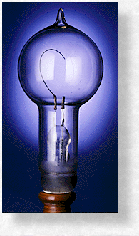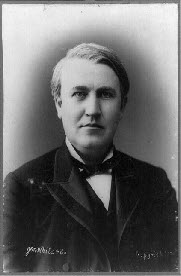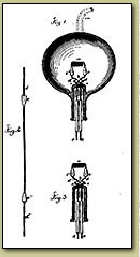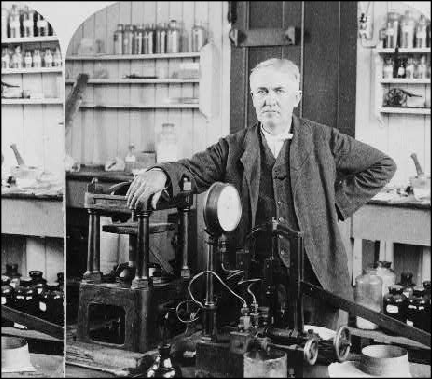



26th July 2008

Edison had little formal education but this did not prevent him from becoming one of the most dynamic inventors of all time. He patented the ‘Phonograph’ in 1877 – and considered how such an invention might be used beyond simply recording voices. He could not have imagined the music industry as it is today – essentially built on his invention. He had also devised the ‘telegraph’ system to allow the transmission of share and stock prices with great speed – perhaps again he cold not have imagined the mushrooming of telecommunications.


Inventors & Inventions
IF IN DOUBT ASK !!!!

His patent on the electric light bulb followed considerable research at Menlo Park – his purpose built laboratories designed as what might be considered an ‘inventions factory’. He had experimented with varieties of carbon filaments derived from different woods and eventually perfected a product contained in a sealed glass envelope. However his far-sightedness regarding the supply of electricity to homes and factories was more influential in its impact on society. He reasoned that using the gas conduits that were already entering homes could make electricity supply more easily placed into buildings – His offer to ‘customers’ was that if the service was less satisfactory than gas lighting he would remove his wiring. His early bulbs were of the same approximate output as the gas mantles of the time so the light would not be considered too harsh. Perhaps he was showing an early consideration of consumers needs and preferences. He undertook a major installation onboard a ship (The Columbia) belonging to a financial supporter of his ventures and also wired Holborn viaduct in London – both intended to popularise the new electric lighting. He built the world’s first electric power generating station at Pearl Street in New York. ( Timeline of achievements ).
Edison’s approach was to create products – amongst his inventions were vacuum packaging of foods, a flying machine – helicopter-style, the electric train, the microphone and many more – giving him over 400 patents.
As much as his list of inventions, Edison was the first to establish what today would be called a ‘research and development’ facility – an idea copied by many companies in the
intervening years. He certainly could be called the ‘Wizard of Menlo Park’ but in the manner of many inventors his creative flair was in invention and not in managing businesses. He also produced artificial graphite that was used as an industrial lubricant.
Edison’s approach was to create products – amongst his inventions were vacuum packaging of foods, a flying machine – helicopter-
As much as his list of inventions, Edison was the first to establish what today would be called a ‘research and development’ facility – an idea copied by many companies in the
intervening years. He certainly could be called the ‘Wizard of Menlo Park’ but in the manner of many inventors his creative flair was in invention and not in managing businesses. He also produced artificial graphite that was used as an industrial lubricant.
Library of Congress Prints and Photographs Division






